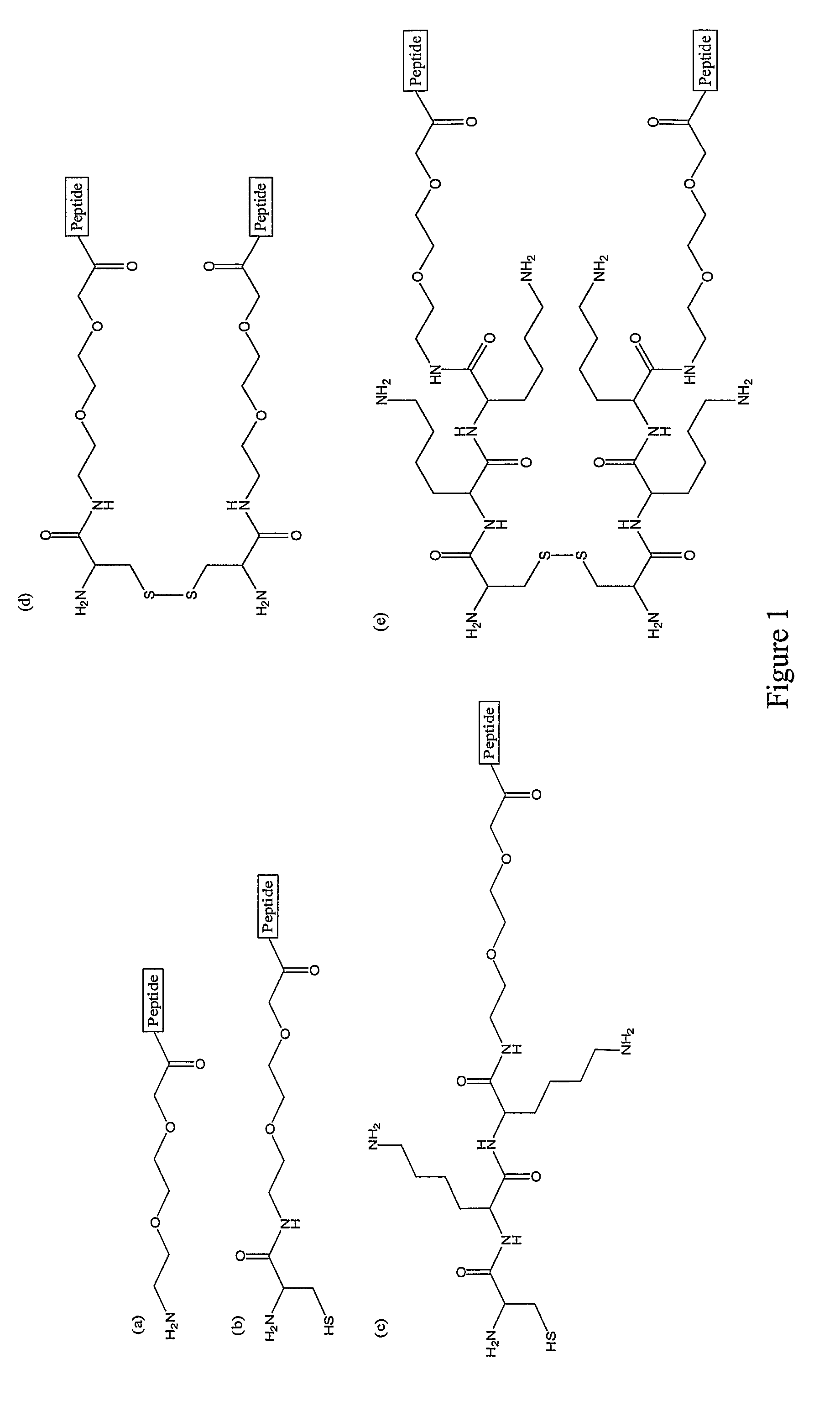CD40-L Inhibitory Peptides
a technology of inhibitory peptides and cd40l, which is applied in the field of peptide-based compositions and analogs, can solve the problems of ineffective modulation of protein interactions between small molecules and short peptides, adverse effects, and prognosis of an increased risk of thrombosis and cardiac ischemia
- Summary
- Abstract
- Description
- Claims
- Application Information
AI Technical Summary
Benefits of technology
Problems solved by technology
Method used
Image
Examples
example 1
Isolation and Characterization of Representative Peptidyl Inhibitors
[0354]This example provides representative peptidyl inhibitors of the present invention and describes methods for their isolation and validation. Additional peptidyl inhibitors of the invention are provided in the basic application, incorporated herein by reference.
Peptide Display
[0355]Using phage display, expression libraries produced from fragments of prokaryote and eukaryote compact genomes, including Salmonella enterica, Bacillus subtilis, Listeria innocua, Neisseria meningitidis, Escherichia coli, Thermotoga maritima, Sulfolobus solfataricus, Borrelia burgdorferi, Deinococcus radiodurans, Campylobacter jejuni, Geobacter sulfurreducens, Pseudomonas aeruginosa, Bordetella pertussis, Haloarcula marismortui and Chlorobium tepidum. The genome fragments inserted into the phage display libraries encode peptides, including natural open reading frames, capable of forming secondary structures or super-secondary structure...
PUM
| Property | Measurement | Unit |
|---|---|---|
| pH | aaaaa | aaaaa |
| half life | aaaaa | aaaaa |
| half life | aaaaa | aaaaa |
Abstract
Description
Claims
Application Information
 Login to View More
Login to View More - R&D
- Intellectual Property
- Life Sciences
- Materials
- Tech Scout
- Unparalleled Data Quality
- Higher Quality Content
- 60% Fewer Hallucinations
Browse by: Latest US Patents, China's latest patents, Technical Efficacy Thesaurus, Application Domain, Technology Topic, Popular Technical Reports.
© 2025 PatSnap. All rights reserved.Legal|Privacy policy|Modern Slavery Act Transparency Statement|Sitemap|About US| Contact US: help@patsnap.com



